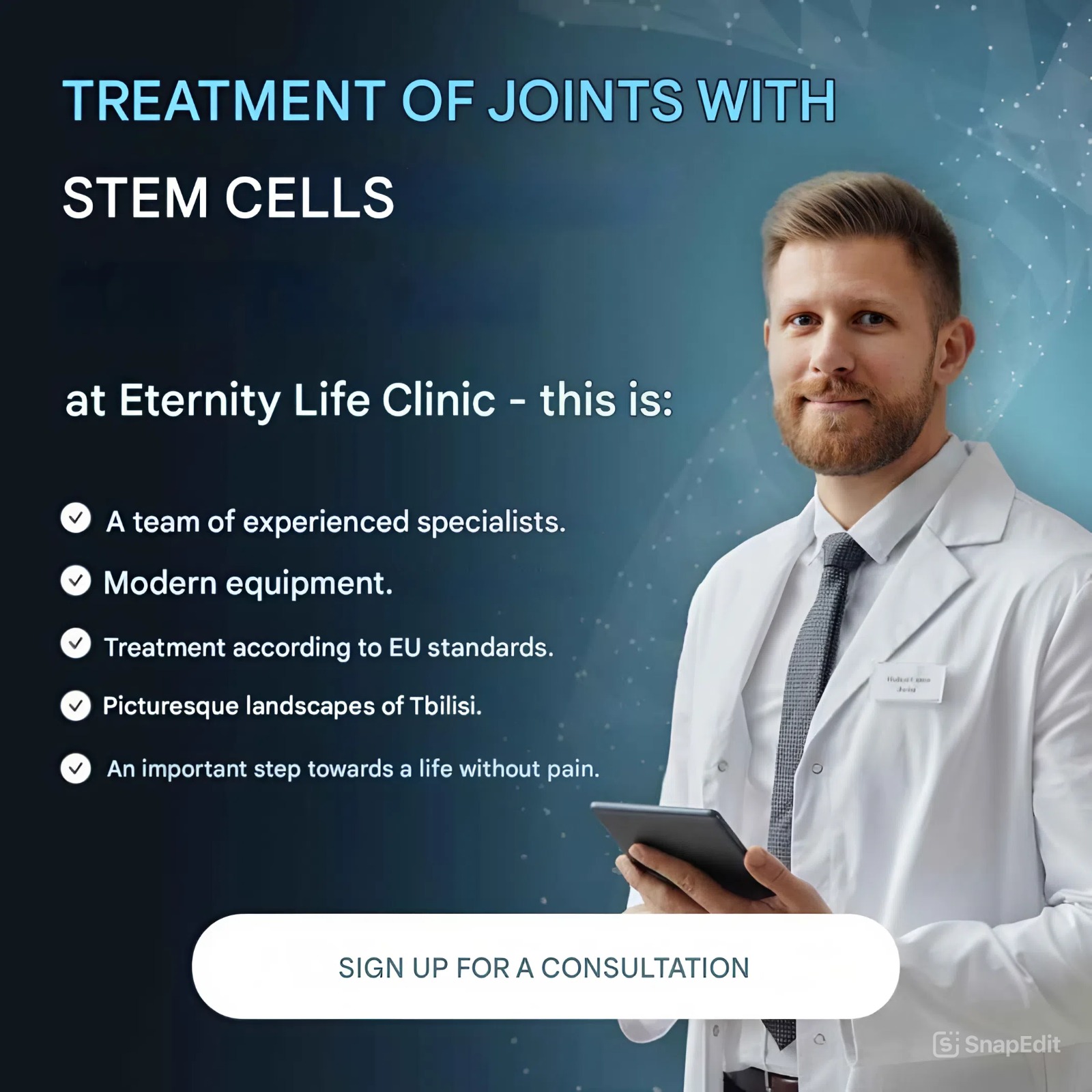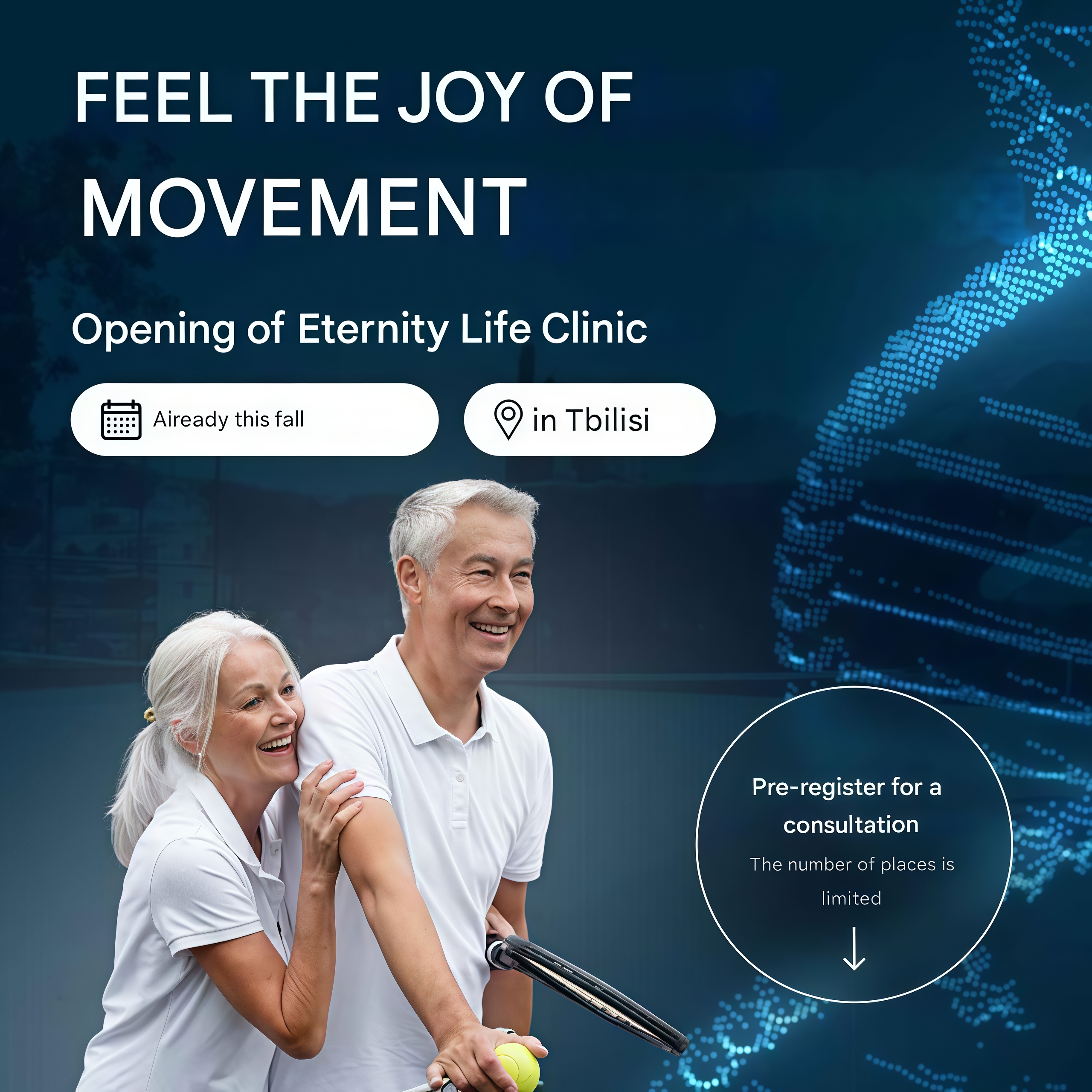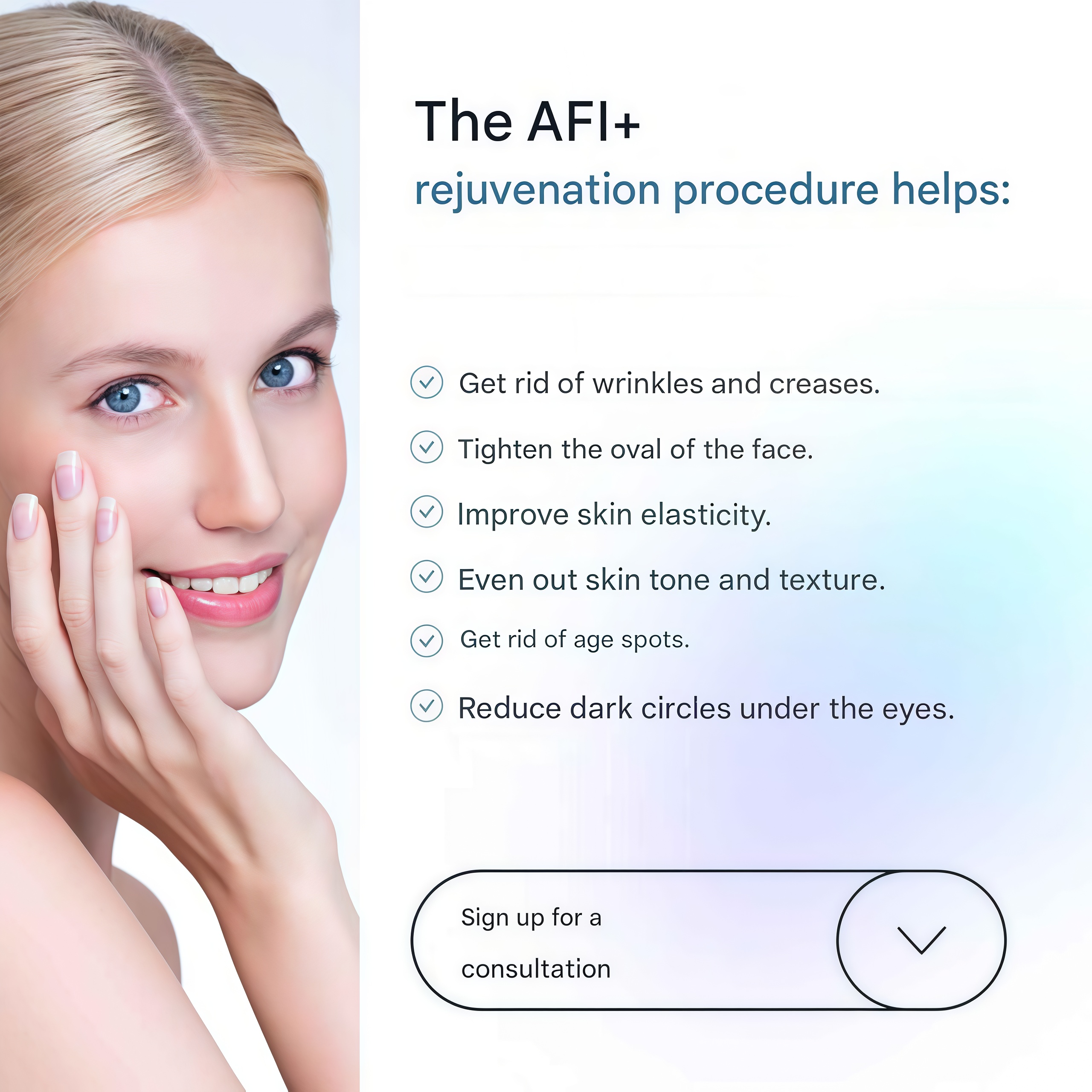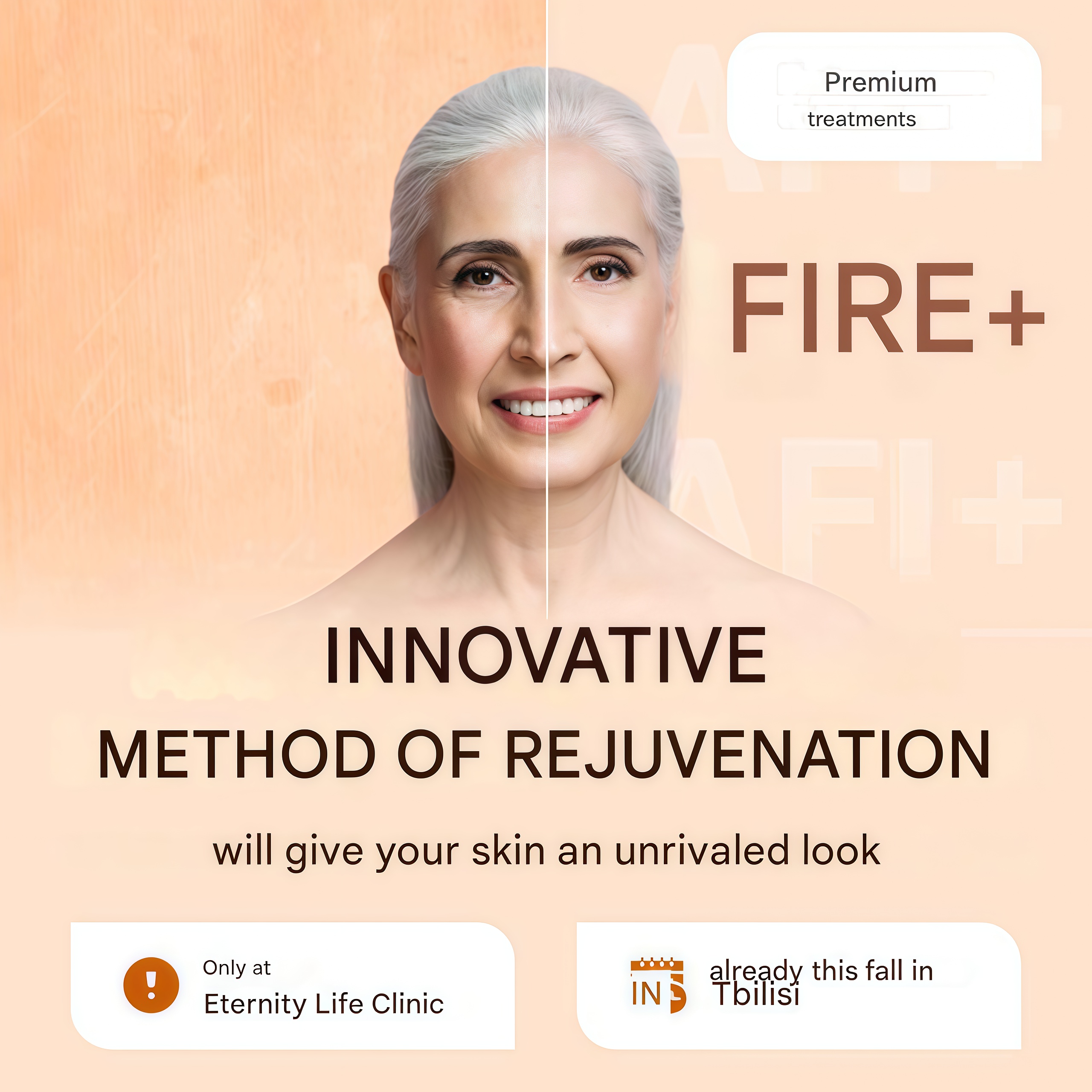Most medical clinics follow a standard launch formula: find a location, hire doctors, launch ads, and wait for clients. But what if we’re talking about a niche, high-cost service where patients aren’t just seeking treatment but are looking to invest in their longevity?
Before opening their doors to clients in new countries, Eternity Life Clinic asked a crucial question:
What is the current demand for our services in Georgia, Bulgaria, and Cyprus?
Are people in these countries truly ready to pay for stem cell treatments and fibroblast rejuvenation?
The clinic’s team approached us with a request: to research the market, define the target audience, test advertising hypotheses, and understand how quickly ROI could be achieved.
Our task was to validate assumptions and create a clear development plan that would help the clinic launch confidently — with minimal risk and a solid understanding of how to effectively attract clients.
| How long did it take to develop the strategy? | 80 hours, 4 calendar weeks |
| What is the composition of the marketing strategy development team? | Head of Marketing Team Head of PM Team Head of Content Team Head of PPC Department Operational Marketer Content Marketer PPC Facebook Marketing Assistant |
| How was the result of the work used? | We helped implement the strategy as a remote marketing department. |
Core services of the clinic:
- Joint treatment with stem cells
- Skin rejuvenation using AFI+ (fibroblasts)
- Cosmetic and aesthetic procedures (not the main focus for promotion)
Additionally planned digital medicine direction — comprehensive diagnostics followed by personalized health improvement recommendations.
Everything looked promising, but one key question remained:
Are people actually willing to pay for these services?
Research across three countries, thousands of sources, and expert insights
To determine the market potential for the clinic, we conducted an in-depth analysis of three key regions: Georgia, Bulgaria, and Cyprus.
We were looking for hard data and statistics — we needed to understand the essence of the market, how demand is formed, what obstacles may arise, and most importantly — whether this business would truly be viable in the selected countries
We structured our research on several levels:
- Global regenerative medicine market assessment.
- Local market analysis in Georgia, Bulgaria, and Cyprus.
- Competitor research in each region.
- Evaluation of demand and consumer behavior.
- Review of regulatory requirements and potential legal barriers.
- Development of potential marketing strategies for client acquisition.
We started with the basics — a global analysis of the regenerative medicine market. Why is this field important, and is there a real future in stem cell treatments and fibroblast rejuvenation?
The good news: this sector is projected to grow rapidly — from $16 billion in 2023 to an estimated $49 billion by 2028.

Growing demand and country-specific insights
The demand for such advanced services is growing, especially among people aged 40+, who are increasingly focused on longevity and quality of life in later years.
Georgia
✅ Medical tourism is popular, but mostly in dentistry, plastic surgery, and reproductive medicine.
✅ Low competition in regenerative medicine — currently only one clinic offers stem cell treatment.
✅ Many Georgians distrust local healthcare — wealthy patients often travel to Turkey for treatment.
💡 The market is not saturated, but introducing such services requires an educational campaign to build demand. It’s a slow-growth environment.
Bulgaria
- Bulgaria’s regenerative medicine market is underdeveloped, but the country is seen as an affordable destination for medical tourism.
- Regulatory analysis shows that stem cell methods are permitted, yet there are few players, and existing clinics barely advertise.
- We studied search trends, social media, and local advertising.
Findings:
✅ Bulgaria is among the cheapest EU countries for medical services.
✅ Only two clinics offer stem cell treatment.
✅ Main clients include Europeans from the UK, Germany, and Israeli residents.
💡 Bulgaria is promising for attracting European patients, but like Georgia, requires a long-term market development strategy.
Cyprus
From the outset, Cyprus stood out as very different.
It is ahub for medical tourismfor Europeans, especially from the UK, Germany, and France.
What we found:
✅ High medical standards aligned with EU regulations.
✅ Government incentives for developing medical tourism.
✅ Active competition — but demand is strong and steady.
We have found several clinics that offer such procedures, and they are not only surviving, but thriving.
- Stable economy, high living standards, and affluent clients willing to invest in health.
- Users actively search for stem cell treatments and fibroblast rejuvenation.
Conclusion:
📍 Georgia — low competition, but demand must be created.
📍 Bulgaria — promising, but needs education-based marketing.
📍 And it was on the basis of this analysis that we were able to make a clear recommendation: if Eternity Life Clinic wants a quick start, minimal risks and predictable development, Cyprus is the best option.
However, the key takeaway from our research: regardless of the country, success depends heavily on how well the company communicates, builds trust, and explains that these treatments are not just cosmetic, but a real investment in youth and quality of life.
Competitor analysis: who’s already in the game and what’s their strategy?
Competitor research is like an investigation: we need to understand what makes them strong, where they fail, and — most importantly — what they leave “off the record.”
We studied six clinics specializing in regenerative medicine across Georgia, Czech Republic, Switzerland, Serbia, and Croatia, plus one branch of a major international network.
Our approach:
- Deep dive into their marketing: checked websites, SEO, promotions, and customer communications.
- Reviewed ad campaigns, content strategies, and overall tone.
- Tested sales departments: submitted inquiries to check response speed and information quality.
This full audit helped us uncover not only their strategies but also their strengths and weaknesses, clearly identifying what works — and what doesn’t.
Insights from Georgia:
- Georgian clinics rely on medical tourism but suffer from reputation issues.
- None of them focus solely on joint treatment.
- They offer a broad range of services — from oncology to cosmetic procedures — indicating a lack of specialization in regenerative care.
| Competitor 1 | The clinic has been operating since 2022, has a well-built website, works for medical tourism, and builds trust through its Ukrainian history. It has its own cryobank, which immediately adds credibility to it. | + places a strong emphasis on Georgia as a tourist destination. The site talks almost as much about the country’s beauty as it does about medical procedures. |
| – We sent a request regarding the cost of the procedures and… we did not receive a response. This coincided with the fact that in the reviews people also complained about the slowness of communication. | ||
| Competitor 2 | They hardly use digital marketing, but instead focus on the personal brand of the founder: a physician with international experience. We’ve seen him being invited to television, giving interviews. | + A doctor’s personal brand plays a key role in building trust in the clinic. |
| – The website is outdated, there are no photos of the rooms, there is no clear structure of information. This may work for an older audience, but younger, affluent clients may perceive it as a sign of unprofessionalism. | ||
| Competitor 3 | One of the oldest, operating since 1995. They are also focused on medical tourism. | + actively work with post-Soviet countries, focus on affordable prices, help with accommodation and transfers. Maintain separate social networks for international clients. |
| – the strategy is not focused on regenerative medicine. |
What did we learn about Georgian competitors?
- They are betting on medical tourism, but they do not work well with the local market.
- They hide prices, forcing customers to leave requests.
- Personalizing the service is not their strongest point.
- The main strength is the personal brand of the doctor.
European clinics: premium and long-term strategy
When we started analysing European players, we immediately saw a contrast. The clinics in the Czech Republic and the United States are on a completely different level. They sell the concept of longevity.
- They don’t have prices on their website because they work on a club membership model. The cheapest is €8000 per year. This is an approach that makes the client not a one-time buyer but a long-term member of an exclusive club.
- They use strong content marketing: they have a blog, newsletters, and even a separate club for fans of longevity science.
- They cooperate with corporate programmes, offering medical solutions for companies.
One of the competitors: another player that has shown a real masterclass in marketing. They have a well-structured website, SEO optimisation, a strong presence on Google, and Meta advertising. They work with medical influencers, record webinars, and are published in leading media. This is a clinic that forms an expert community around it.
In addition to researching websites and social media, public perception is important in medicine, so we also checked this…
Reviews you should look for in places you don’t expect
We didn’t limit ourselves to reviews on clinic websites or on Google. We went further — and looked for opinions on forums, in specialised Facebook groups, even in Telegram chats for medical tourism.
Here’s what we found:
Competitor 1 had cases of negative reviews due to poor patient management after procedures. People complained that everything was great after the first appointment, but then the clinic forgot about them.
For competitor 2, almost all reviews were positive, but we found complaints about the high price and that some procedures had no effect.
Competitor 3 received complaints about the lack of understanding of the staff: some doctors spoke only Georgian, which caused barriers for foreigners.
If there is no good service after the procedure, people will be dissatisfied.
Conclusions:
- Georgia is a market where customers trust doctors’ personal brands rather than clinics.
- European clinics build long-term relationships with clients through non-standard business models, educational content, and trust in science.
- Marketing solves everything. Strong brands don’t just advertise services, they create a concept of longevity, health, and innovation.
An analysis of competitors showed that for Eternity Life Clinic to succeed, we needed to create a story. And after analysis we knew exactly how to do it:
- Video content sells better than texts.
- A personalized approach is key for the premium segment.
- The speed of response to a request is a decisive factor.
- People want not just procedures, but a health subscription that will always be with them.
Project analysis: from location to clinic image
Eternity Life Clinic is a concept that is still being formed. There is no website, no social media, no history. But there is a vision: a clinic that provides premium services in the field of regenerative medicine and is aimed at medical tourists.
We are used to analysing a company’s digital presence. This time, however, we had to start with the physical — with the location, the appearance of the building and the first impression it makes on potential patients.
1. The facade matters
If the clinic will be located on the basis of an existing polyclinic, it is important to immediately assess its appearance.
— A facade that looks ordinary is not associated with premium services.
— The surrounding landscape does not emphasise the status of the facility; it lacks modern design.
—The entrance area does not create a sense of trust and comfort for foreign patients.
But does it matter?
Yes, and yes again. In medical tourism, the first impression decides a lot. Patients fly to another country not only for a service, but also for a sense of safety, comfort and level of care.
Recommendations:
✔ Provide a modern, presentable façade — to update the entrance area, create a branded visual identity.
✔ Add landscaping and lighting — these are minimal changes that can significantly improve perception.
✔ Emphasise the innovativeness of the clinic by using technological design in the interior design.
2. Reputation of partners is your reputation
Another important insight is that the image of a clinic depends on its partners.
📌 If Eternity Life Clinic is going to cooperate with a polyclinic, you should pay attention to its online reputation and check: patient reviews, level of service, whether the clinic has international certificates and proven expertise.
⚠ Risk: if a partner clinic has a negative image, it can affect the credibility of Eternity Life Clinic even before it opens. Therefore, it is worth monitoring the reputation, identifying possible risks and ways to eliminate them.
Medical marketing is not just about advertising, it’s about trust.
The level of trust is a critical factor in deciding whether to fly thousands of kilometres away.
How clients choose a clinic: choice factors
Choice factors are a list of features of your business that influence a customer’s decision to choose your company, your way of meeting a need, a specific offer, or to encourage a repeat purchase.
The main problem here is that there is no objective assessment of the importance of each choice factor for making a decision, as the user is unlikely to read all of them. This means that your customers will always have only part of the information about you.
For some, a recommendation from a friend will be enough, for others it is important to see the doctor’s active work in the medical field, and so on. Therefore, our goal at this stage is to identify as many choice factors as possible and help you implement them.
Read more about how choice factors can help your business in this article.
Choosing is a decision, and trust makes it obvious.
Imagine: a person decides to travel to another country to entrust their health to unfamiliar doctors. It is a choice of trust, safety and confidence.
Our task is to understand what exactly influences patients’ decision to visit Eternity Life Clinic rather than another medical facility. What convinces them to take this step? What stops them? How can we influence this?
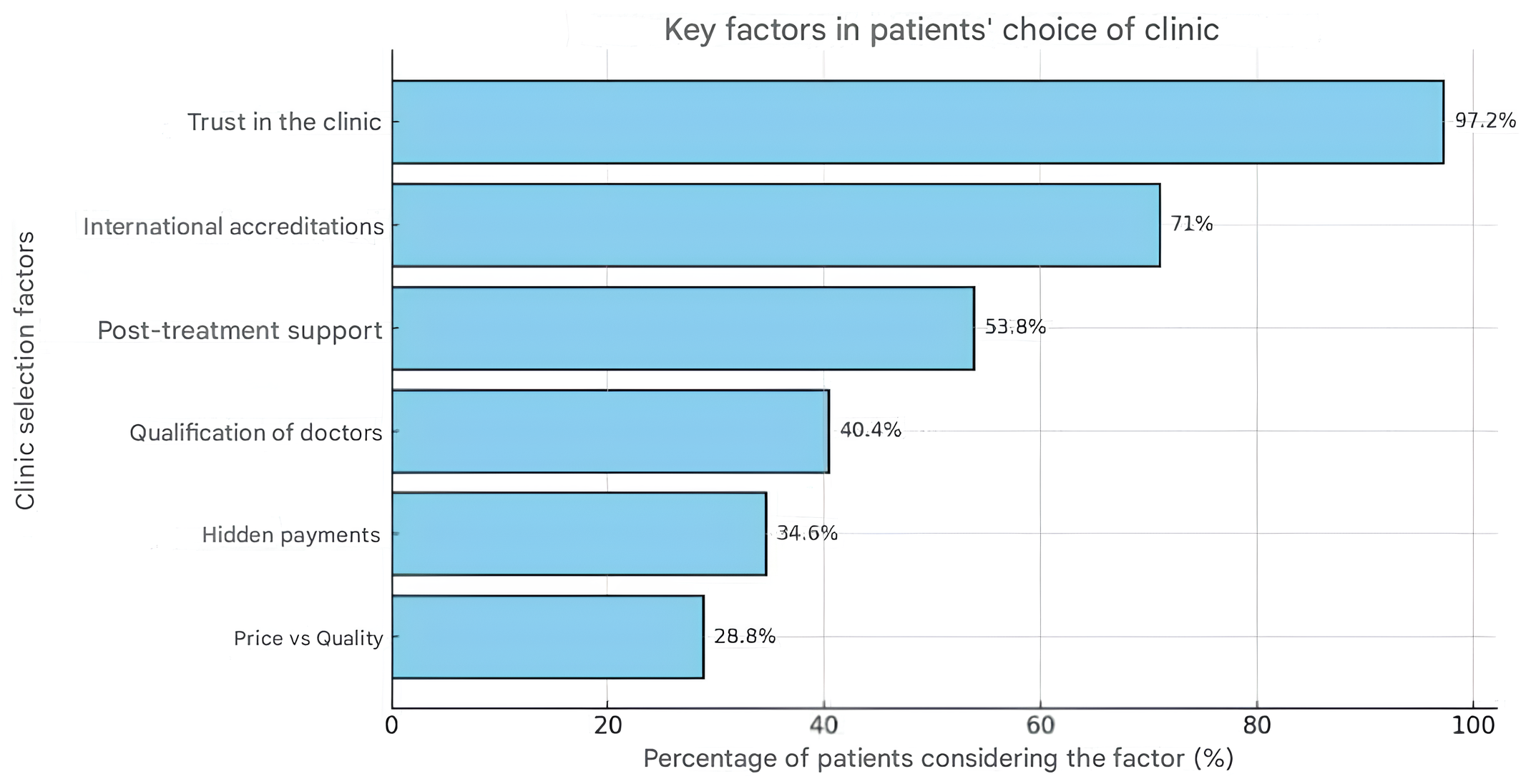
It is not just data, it is the feelings and experiences of the decision maker.
Why do people change their choice of clinic?
Patients don’t always go to the first medical facility they find out about. Why?
📌38.5% choose a clinic with the best equipment, quality of services and international accreditations.
📌 30.8% are guided by feedback from real patients.
📌 21.2% change their minds because of secure payment options.
📌 19.2% make decisions based on the quality of post-operative care.
We can influence patients’ decisions before they make a choice. But we need clear arguments to do so.
Since trust is the basis of everything, it is worth working on it comprehensively.
For Eternity Life Clinic to become an obvious choice for medical tourists, you need to set the right accents: show the expertise of doctors, demonstrate transparency in prices and payments, actively work with reviews and cases, and provide patients with support at all stages of treatment.
The decision to choose a clinic is made not in a second, but during the interaction with the brand. And it is we who determine what this experience will be like.
Are you ready to make the client’s choice in your favor?
How did we set up lead generation? The story of the experiment and results
The development of the marketing strategy gave us a clear understanding of the market, competitors and target audience. But even the strongest hypotheses need to be tested. That’s why the client requested a test run of advertising to evaluate the effectiveness of offers and creatives and determine the real cost of customer acquisition.
At this stage, we offer test lead generation: it allows you to get the factual data you need for further scaling. Based on positioning, competitor, and audience research, we quickly check how well the advert is working. As a result, the client receives:
✅ Understanding of demand — and whether the service is interesting to potential customers.
✅ The real cost of a lead — which helps to assess the profitability of advertising.
✅ Feedback from the audience — which messages and offers work best.
✅ Proven creatives — which ad variants attract customers the best.
To do this, we used two advertising tools — Google and Meta Ads. Testing allows us to understand in practice how to convince potential patients not only to read about treatment, but also to take the first step towards visiting the clinic.
We studied the risks, seasonality, and feasibility of promotion in two areas:
Google Ads:
Google seemed like a logical choice. People are looking for solutions to their health problems, and we can receive their requests. But already at the analysis stage, we saw the pitfalls.
- There are almost no queries in search engines. This means that the usual approach of “launch search advertising — get leads” won’t work.
- Advertising restrictions: strict rules for advertising medical services. Stem cell treatments are a red flag for us. Any careless wording can lead to blocking.
The forecast was restrained: Google Ads will not become the main source of leads, but it can help to generate demand and find the first customers.
Meta Ads:
Facebook and Instagram had an advantage: the ability to create demand, not just catch those already looking for treatment. What did we know in advance?
- Meta is also strict about advertising medical services. There were risks of blocking.
- Not all users understand that stem cell treatment can help them.
This is how our media plan looked like:
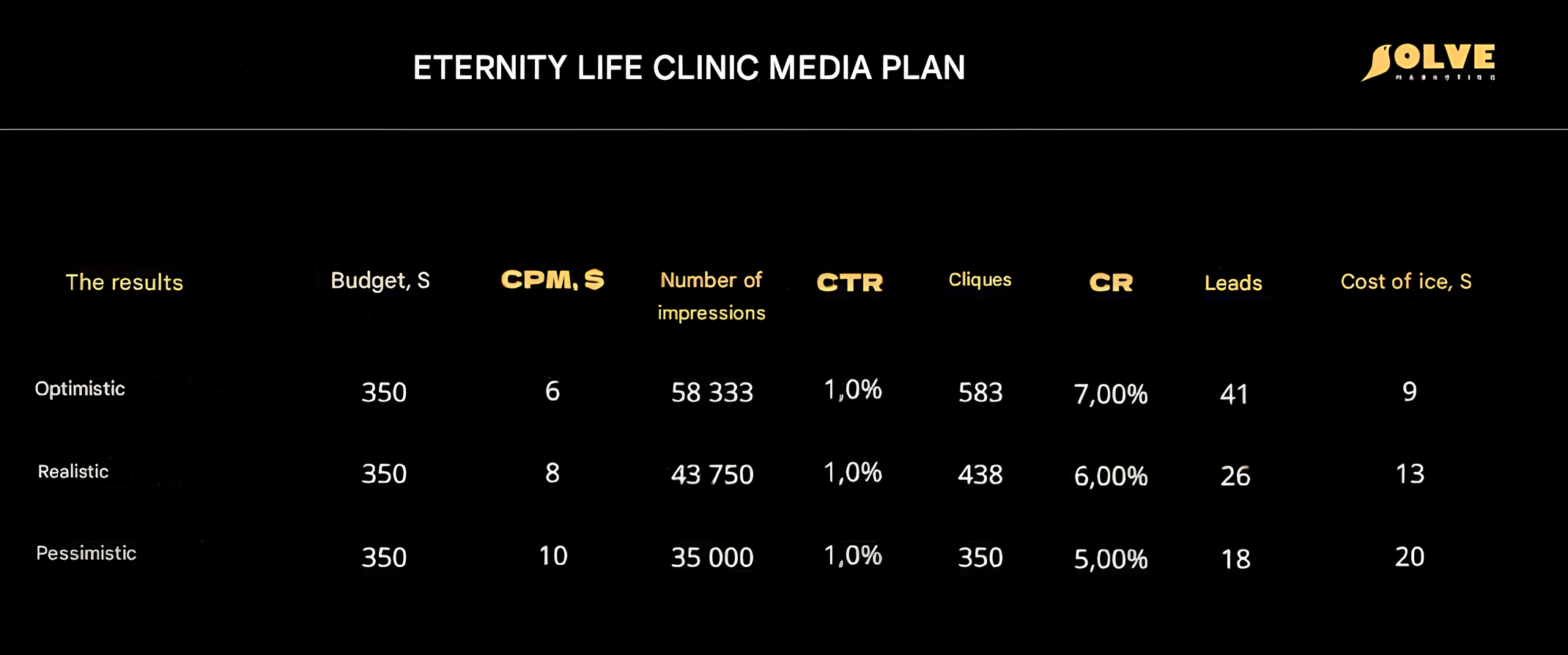
We collected the terms of reference, set up an advertising account, and created advertising materials:
Details of the test launch
📍 Format: advertising on the lead form in Meta (Facebook and Instagram).
📍 Geo: Georgia.
📍 Budget: $350.
Duration: 2 weeks.
📍 Services:
- Treatment of joints with stem cells (3 creatives, 3 texts).
- Skin rejuvenation with AFI+ fibroblasts (3 creatives, 3 texts).
General results in two areas after testing:

How did it turn out in reality?
💰 Google Ads: confirmed that there were almost no requests. We received visits to the site, but realised that potential clients were in no hurry to send a request because of trust factors. At the same time, organic search results were densely occupied by international clinics with powerful websites and long-term SEO promotion.
🎯 Meta Ads: provided the first leads. The target audience was ready to consider the treatment if everything was explained in clear language and the right offers were used.
- The cost per lead turned out to be higher than expected, as the medical niche is expensive.
- The ads were easily blocked due to the Meta policy. However, after adjusting the texts and visuals, the campaigns worked steadily.
- We realised that we needed to experiment more with audience segments and funnels.
What we learned after the first stage of testing:
- The high level of audience interest indicates the relevance of the service and demand.
- The cost of a lead is determined — we have received the first real indicators of the cost of customer acquisition.
- We identified the most effective creatives and messages that resonate with the audience the most.
- We identified growth points — what can be improved for further scaling.
We also provided recommendations to increase conversion, which we noticed during the first testing: to improve the landing page of the site and set up a procedure for processing requests.
Next step?
- Optimise campaigns based on the first data.
- Launch advertising campaigns on the landing page to improve lead quality.
- Scaling successful creatives and testing new variants.
- Implementation of fast lead processing for maximum results.
The test run provided important data on audience response, offer effectiveness, and scaling options. This allows us to build a further advertising strategy based on real indicators, not assumptions.
Marketing strategy of Eternity Life Clinic
The marketing strategy provides clear answers to the questions of what exactly and how to do it to ensure the growth of awareness, trust and a steady flow of clients. Thanks to an integrated approach, the client received a step-by-step guide to developing marketing at the local and international levels.
The final marketing strategy document contained the following key areas:
1. Foundation: brand and basic marketing activities
- Positioning of the clinic.
- Communication strategy.
- Pricing strategy.
- Development of a brand book.
- Creation of a website.
- Launch of social networks.
- SMM strategy.
2. Active audience engagement and first customers
- Lead generation.
- Affiliate marketing.
- Organising webinars.
- Organising a clinic opening event.
- Open door days.
- Registration on electronic maps and medical platforms.
3. Scaling and increasing conversions
- Development of a loyalty programme.
- SEO and content marketing.
- Work with reviews and online reputation management.
- Developing a personal brand for doctors.
4. Further steps and entry into the international market
- Expanding advertising campaigns.
- Launch of advertising on radio and television.
- Launch of other language versions of the website.
- Cooperation with international bloggers.
- Organising study tours.
Conclusions
Starting a new business is always a risk. Will there be demand? In which country is it best to start? How to attract customers and not waste your budget? Many companies act at random or analyse for a long time until opportunities disappear.
Eternity Life Clinic, which specialises in regenerative medicine, turned to us at the concept stage. They needed to understand where best to open a clinic, who would become their clients and how to build marketing that would really work.
We conducted an in-depth analysis of the markets of Georgia, Bulgaria and Cyprus: we studied medical tourism, competitors, the behaviour of potential patients and key choice factors. This allowed us not only to find the best country to start, but also to understand how to set up communication so that people trust the clinic and choose it.
To test our hypotheses, we launched a test advertising campaign, which provided the first real data: the cost of a lead, the effectiveness of offers, and the audience’s reaction.
It is this approach — first analysis, then testing, and only then scaling — that allows businesses to reduce risks, optimise budgets, and grow confidently.
The marketing strategy from Solve Marketing is a clear action plan that helps companies at different stages:
📌 startups that are just planning to enter the market;
📌 businesses looking for new countries to scale;
📌 companies that have been operating for a long time but want to make marketing more effective.
Eternity Life Clinic was so impressed with the results that after developing the strategy, they entrusted us with full marketing management. But this is a story for the next case study.
If you also want to understand where and how to move, sign up for a consultation and let’s find the best solution together. Solve Marketing is your marketing department on a turnkey basis. We build effective strategies, attract customers, and create a strong brand.

